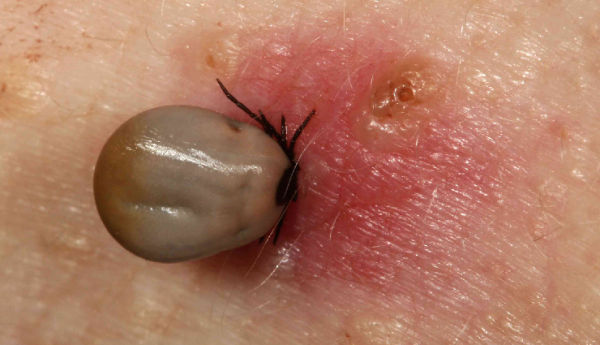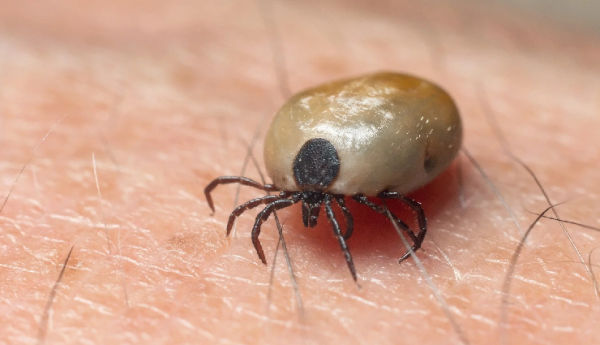
Ticks are parasitic arachnids that feed on the blood of mammals, birds, amphibians, and reptiles. They vary in size and typically have eight legs, with colors ranging from brown to reddish-brown and black. These parasites thrive in warm, moist areas of the body.
While most tick bites are harmless, some ticks carry diseases that can be transmitted to humans through their bites, leading to various symptoms. Tick-borne diseases are particularly common in India and the United States.
Common Tick-Borne Diseases

# Kyasanur Forest Disease (KFD)
Kyasanur Forest Disease is a re-emerging zoonotic viral infection caused by the Haemaphysalis spinigera and Haemaphysalis turturis ticks. First identified in 1957 in Karnataka’s Shimoga district, this disease primarily affects humans and monkeys.
Lyme disease is the most prevalent tick-borne illness, with the Centers for Disease Control and Prevention (CDC) confirming 22,500 cases and estimating an additional 7,500 cases worldwide in 2010. It is transmitted through the bite of black-legged deer ticks and can severely impact the brain, nervous system, heart, muscles, and joints.
# Rocky Mountain Spotted Fever
This bacterial infection, spread by ticks, can cause severe complications, including chronic damage to internal organs such as the heart and kidneys. Common symptoms include intense headaches and high fever. The disease is most frequently reported in the Southeastern United States.
# Colorado Tick Fever
Colorado tick fever is a viral infection transmitted by the bite of an infected wood tick. Symptoms typically include fever, headache, and chills. The disease is most prevalent in Colorado, with peak cases occurring between April and July, and the highest incidence reported from February to October.
# Tularemia
Tularemia is a rare infectious disease that primarily affects mammals but can also be transmitted to humans through an infected tick or direct contact with an infected animal. Symptoms vary depending on how the bacteria enter the body.
# Ehrlichiosis
Ehrlichiosis is a bacterial infection caused by the lone star tick, leading to flu-like symptoms such as fever, body aches, and diarrhea. This disease is commonly found in the Southeastern and South-Central United States.
# Babesiosis
Babesiosis is a parasitic infection primarily transmitted through tick bites. Symptoms include chills, fever, muscle aches, fatigue, and abdominal pain. According to the CDC, most cases occur in New York, New England, Wisconsin, Minnesota, and New Jersey.
# Relapsing Fever
Relapsing fever is a bacterial infection spread by certain tick species. Symptoms include headache, chills, vomiting, coughing, neck or eye pain, and diarrhea. The disease is most frequently reported in the Western United States.
# Human Granulocytic Anaplasmosis (HGA)
HGA is a tick-borne rickettsial infection transmitted by Ixodes ricinus ticks. Common symptoms include fever, nausea, vomiting, and severe headaches.
# Tick Paralysis
Caused by the bite of certain ticks, tick paralysis leads to tingling and numbness throughout the body. Species like the Rocky Mountain wood tick, American dog tick, and Dermacentor ticks are responsible. If untreated, the condition may affect lung function.
# Tick-Borne Encephalitis (TBE)
TBE is transmitted by infected ticks found in woodland areas. It affects the central nervous system, causing symptoms like headache, fever, fatigue, and nausea.
# Powassan Encephalitis
This rare viral disease is transmitted through tick bites and leads to inflammation of the brain and the membranes surrounding the brain and spinal cord.
# Boutonneuse Fever
Caused by Rickettsia conorii and transmitted by the dog tick (Rhipicephalus sanguineus), Boutonneuse fever is rare and primarily found in Mediterranean regions. It is also known as Indian Tick Typhus (ITT).
This disease is transmitted by the Amblyomma cajennense tick and presents symptoms similar to Lyme disease.
# Crimean-Congo Hemorrhagic Fever (CCHF)
CCHF is a viral hemorrhagic fever spread through tick bites or contact with infected animal tissues. It is commonly found in Africa, the Middle East, Asia, and the Balkans.
# Ehrlichiosis Ewingii Infection
This bacterial infection is transmitted by the lone star tick (Amblyomma americanum), which also spreads Ehrlichia chaffeensis, the bacteria responsible for human monocytic ehrlichiosis.
# Southern Tick-Associated Rash Illness (STARI)
STARI is caused by the bite of the lone star tick, leading to a distinctive rash that appears within seven days and can expand to over 8 cm in diameter. Symptoms include fever, headache, fatigue, and muscle pain.









